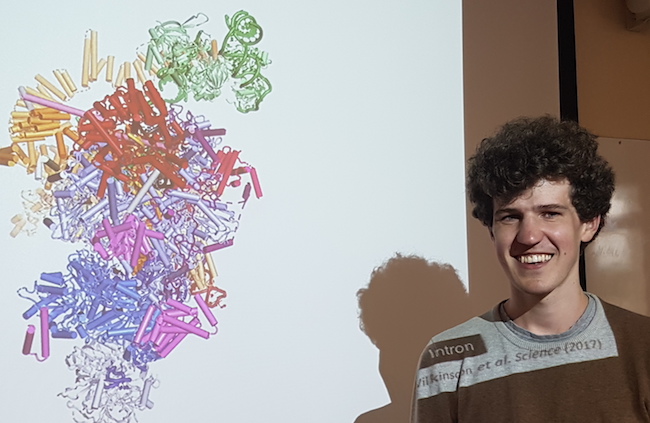 Max Wilkinson returned to Dunedin yesterday to give a talk about his exceptional research into the structure of the spliceosome.
Max Wilkinson returned to Dunedin yesterday to give a talk about his exceptional research into the structure of the spliceosome.
Max is currently completing his PhD in Cambridge, at the MRC Laboratory of Molecular Biology, where he has been studying the spliceosome in the laboratory of Professor Kiyoshi Nagai.
The spliceosome is an important molecular machine that cuts up and sticks together pieces of RNA in the cell. Researchers have been working very hard for decades to figure out exactly what it looks like and how it works, and the team from the Nagai Lab that Max has been working with has recently made major progress. Since joining the team, Max has been a co-author on two papers in the journal Nature, and a first author on a paper published in Science. This is an extraordinary accomplishment for any researcher, let alone one who has not yet completed a PhD.
Yesterday, Max's compelling presentation clearly explained how the extraordinarily complex spliceosome machinery carries out catalysis, using beautifully presented animations. He also described how the spliceosome structures were solved, from the ingenious isolation of the spliceosome complex from yeast, through to the use of cryo-electron microscopy, a technique used to look at the structure of large molecules.
In 2014, Max was a Biochemistry honours student in Professor Kurt Krause's lab, working in collaboration with Associate Professor Peter Fineran in the Department of Microbiology and Immunology on the structure of a Cas1 protein from a CRISPR-Cas system. He was awarded the University's Prince of Wales prize for 2014 (the University's premier undergraduate award), and the Department of Biochemistry's Edson Prizes for academic excellence at 300- and 400-level in 2013 and 2014 respectively.